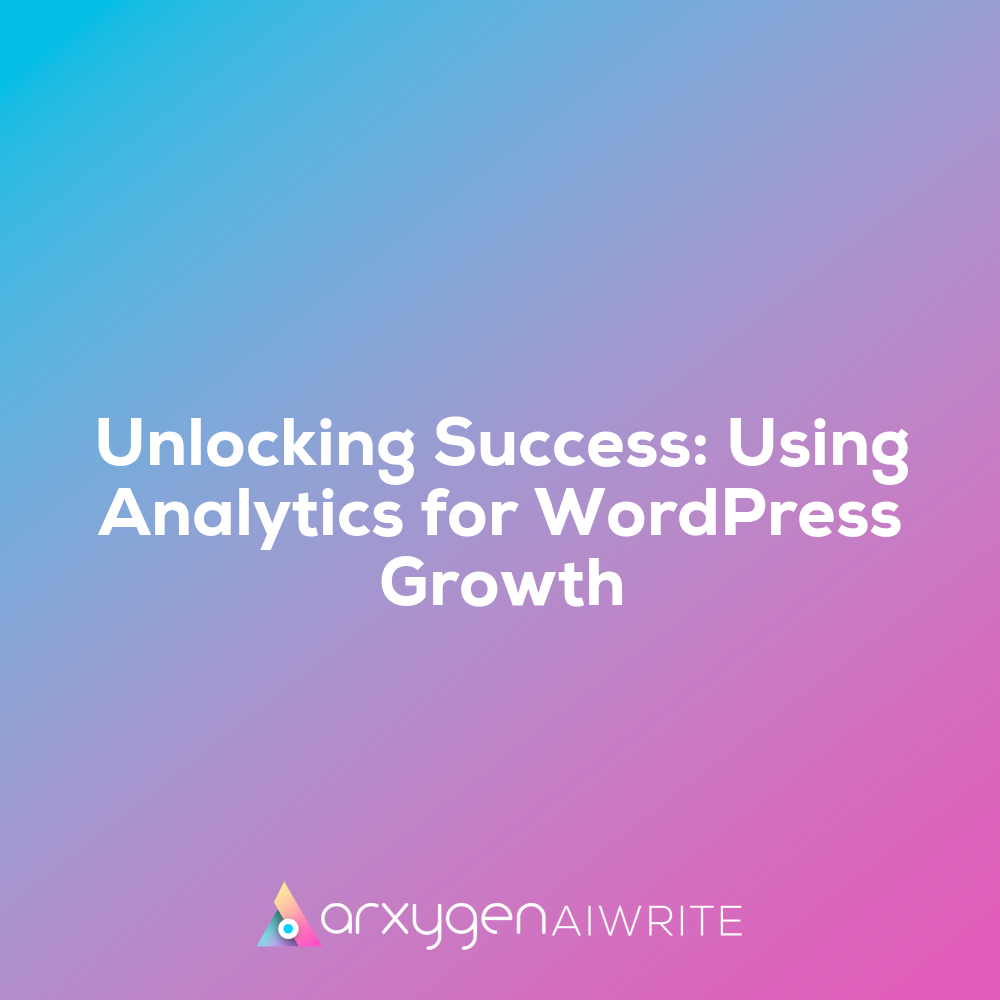Harnessing Analytics for Effective WordPress Growth
In today’s digital landscape, data-driven decision-making is essential for optimising your WordPress site. By analysing user data, website owners can make informed choices that enhance performance and engagement. Imagine a blog that once struggled to attract readers. After implementing analytics tools, the owner discovered that most visitors left after reading just one article. This insight prompted a strategic overhaul, focusing on creating interconnected content that keeps users on the site longer.
Uncovering User Behaviour Patterns
Analytics not only aids in decision-making but also reveals valuable user behaviour patterns. By examining metrics like page views and time spent on each page, you can identify what resonates with your audience. For instance, a food blog might find that recipes featuring seasonal ingredients receive more clicks than others. With this knowledge, the owner can tailor future content to align with reader preferences.
Furthermore, understanding user demographics allows for targeted marketing efforts. If analytics show a significant portion of visitors are from a specific region, you can create content that appeals directly to that audience. This targeted approach can lead to increased engagement and conversions.
Ultimately, leveraging analytics transforms your WordPress site into a dynamic platform that evolves with its audience. By consistently monitoring and adapting based on data insights, you unlock the potential for sustained growth and success.
Essential Metrics for WordPress Growth and Success
In the fast-paced digital world, understanding your audience is crucial. Analytics tools like Google Analytics provide invaluable insights into user behaviour. For WordPress users, various plugins simplify tracking, making it easier to gather essential data without needing extensive technical knowledge. Tools such as MonsterInsights or Jetpack can integrate seamlessly with your site, delivering vital metrics right to your dashboard.
Key Performance Indicators Every Site Owner Should Monitor
When diving into analytics, it’s important to identify key performance indicators (KPIs) that can steer your growth strategy. Start by examining traffic sources. Knowing where your visitors come from allows you to focus your marketing efforts effectively. Are they arriving via social media, search engines, or referral sites? This information can help you optimise your campaigns.
Next, consider the bounce rate. A high bounce rate often indicates that visitors aren’t finding what they expected. By analysing the pages with the highest bounce rates, you can pinpoint areas for improvement. Perhaps the content isn’t engaging enough, or the layout is confusing. Adjusting these elements can significantly enhance user experience.
Finally, track conversion rates. This metric tells you how well your site turns visitors into customers or leads. Whether it’s signing up for a newsletter or making a purchase, understanding what drives conversions is key to optimising your site for success. A/B testing different elements on your site can reveal what resonates best with your audience.
By leveraging these tools and metrics, you can unlock the potential of your WordPress site. Success isn’t just about having a beautiful design; it’s about understanding and responding to the needs of your audience.
Harnessing Data Insights for Long-Term WordPress Growth
In the competitive landscape of online marketing, A/B testing serves as a powerful tool for refining strategies and enhancing conversions. By comparing two variations of a webpage, businesses can identify which elements resonate better with their audience. This iterative process allows for continuous improvement, ensuring that marketing efforts are not only effective but also aligned with user preferences.
Strategies for Leveraging Data Insights to Enhance Engagement
Utilising analytics effectively can significantly improve content and user engagement on your WordPress site. Start by analysing user behaviour metrics to understand what content draws the most attention. Are visitors spending more time on certain blog posts? If so, delve deeper into those topics to create more targeted content.
Another effective strategy is to segment your audience based on their interactions. By tailoring content to specific demographics or interests, you can foster a more personalised experience that encourages users to engage further. For instance, if analytics show that a particular group responds well to visual content, consider incorporating more infographics or videos in your posts.
Moreover, tracking user journeys through your site can reveal valuable insights. Identifying drop-off points in the conversion funnel helps pinpoint where users lose interest. With this information, you can refine those areas, whether it’s simplifying navigation or enhancing calls-to-action. The goal is to create a seamless experience that guides users toward desired actions.
Finally, don’t underestimate the power of feedback loops. Encourage users to share their thoughts through surveys or comment sections. Their insights can provide a fresh perspective on what works and what doesn’t. This collaborative approach not only enhances engagement but also builds a community around your brand.
By implementing these strategies and harnessing the power of analytics, you can unlock the full potential of your WordPress site, driving sustainable growth and lasting success.

